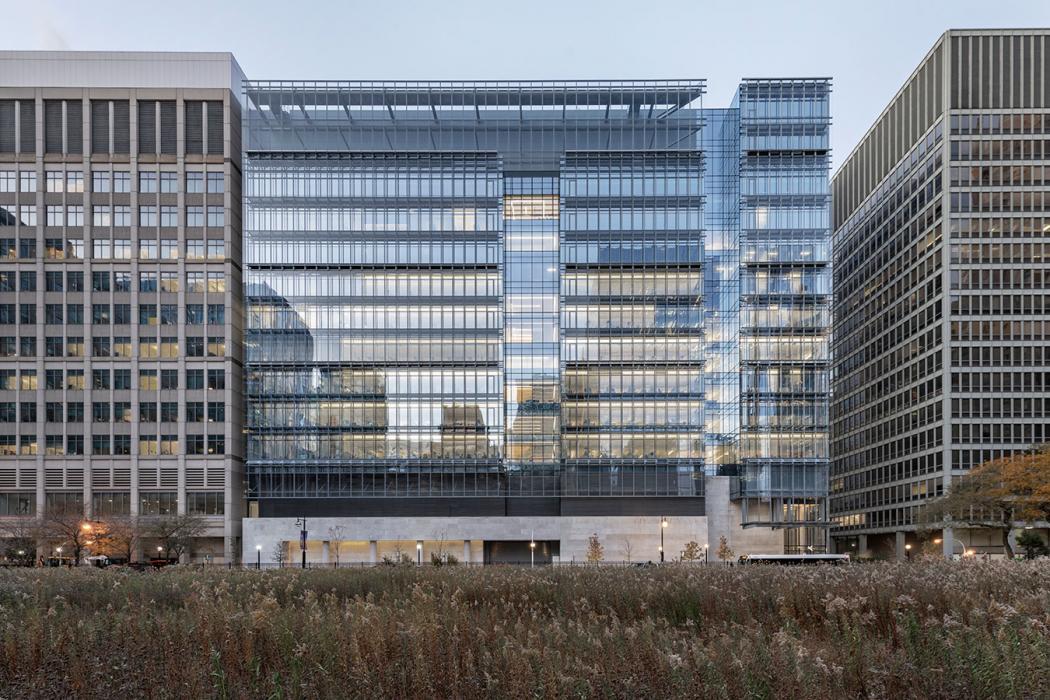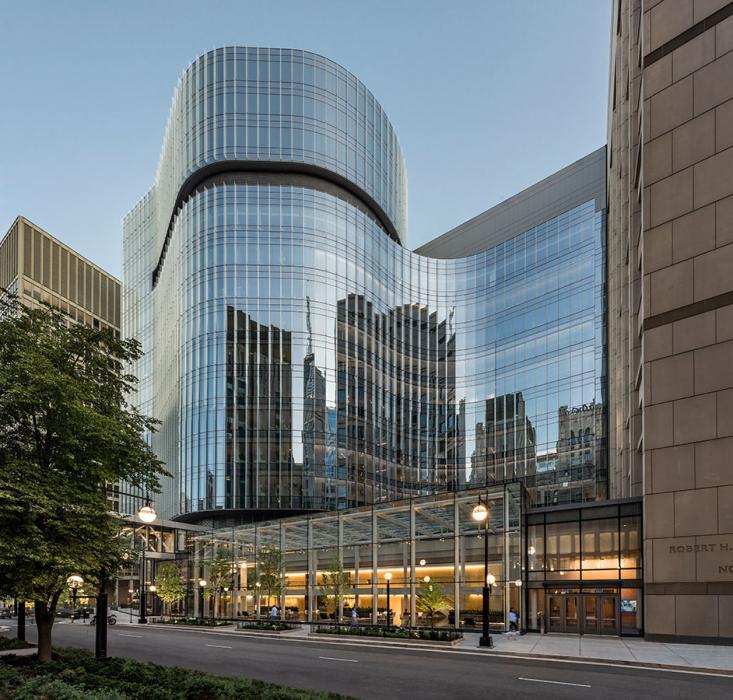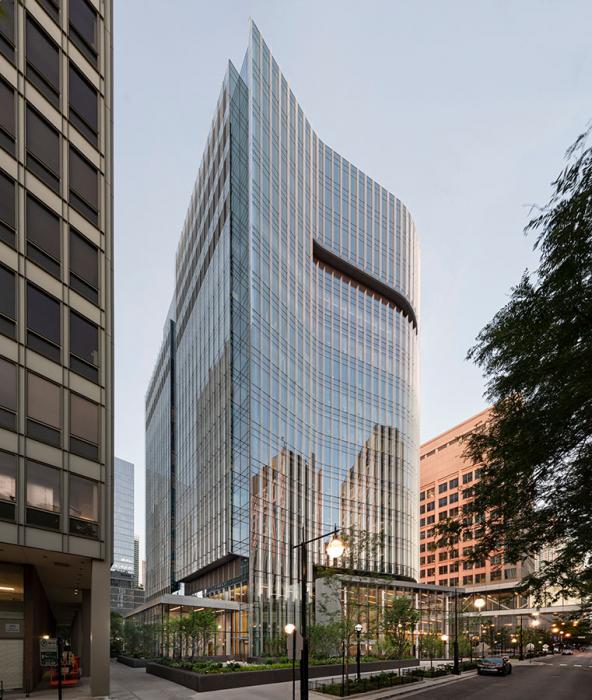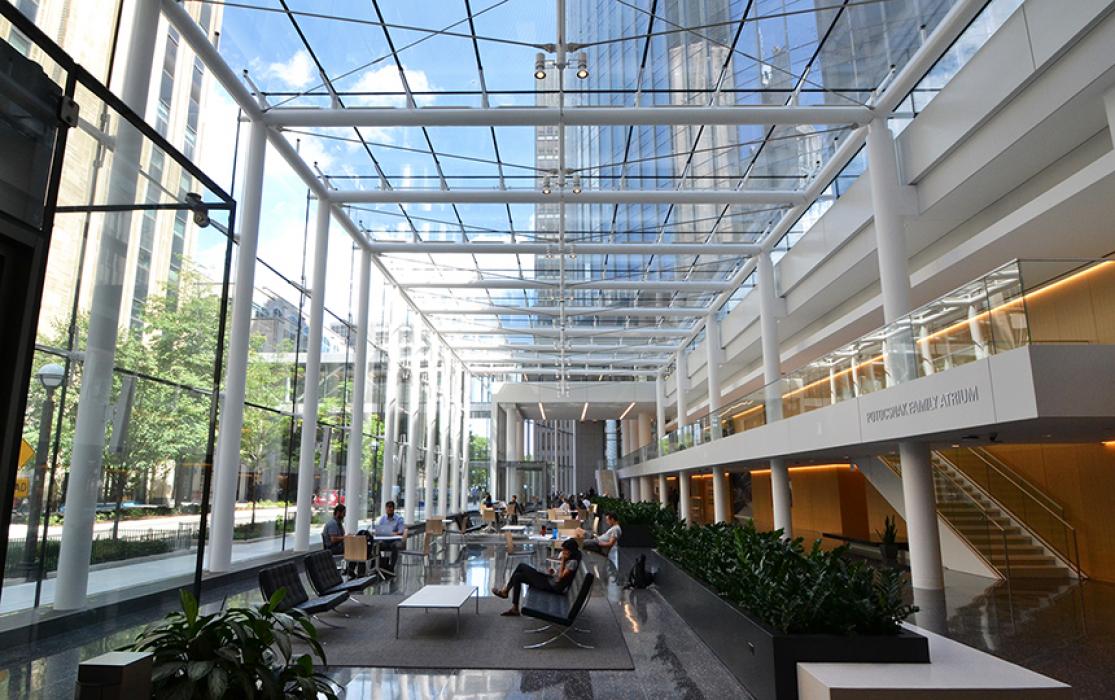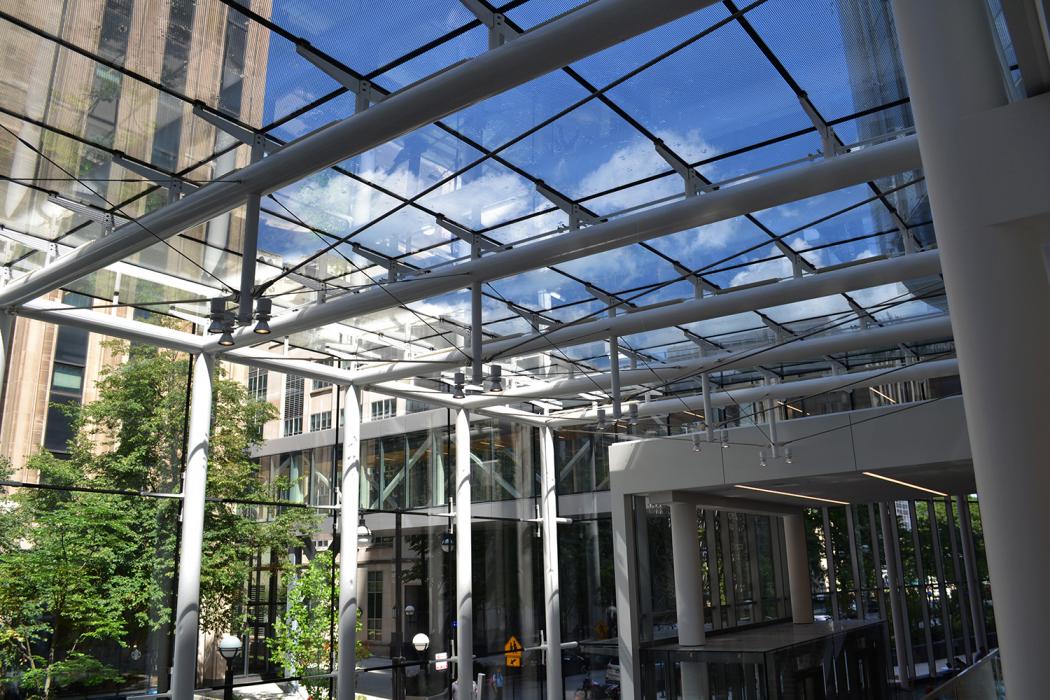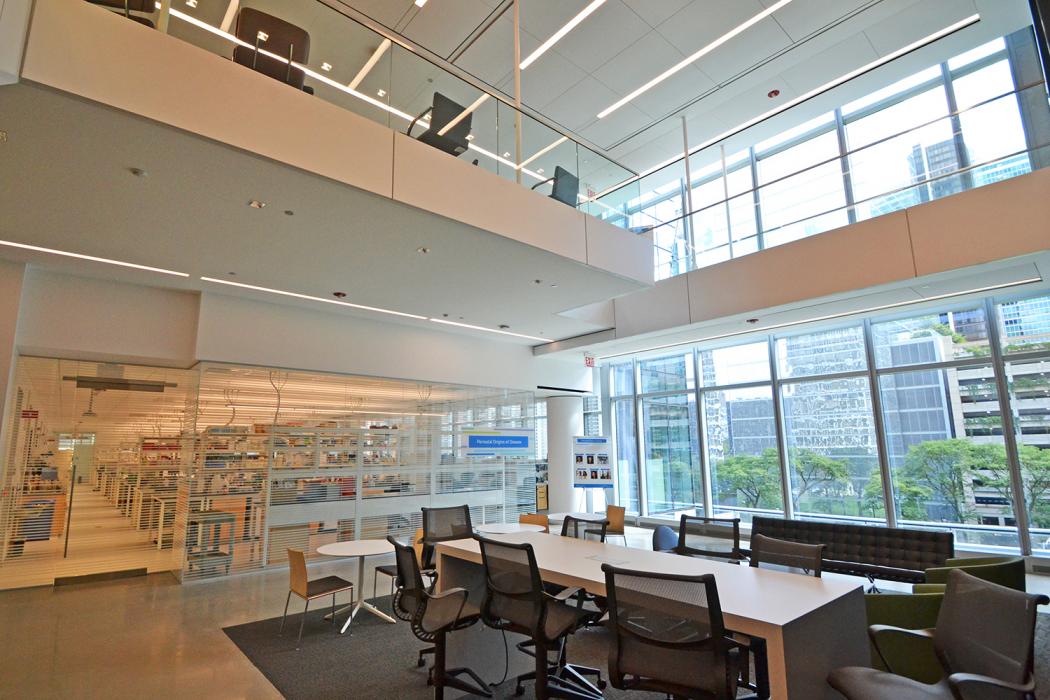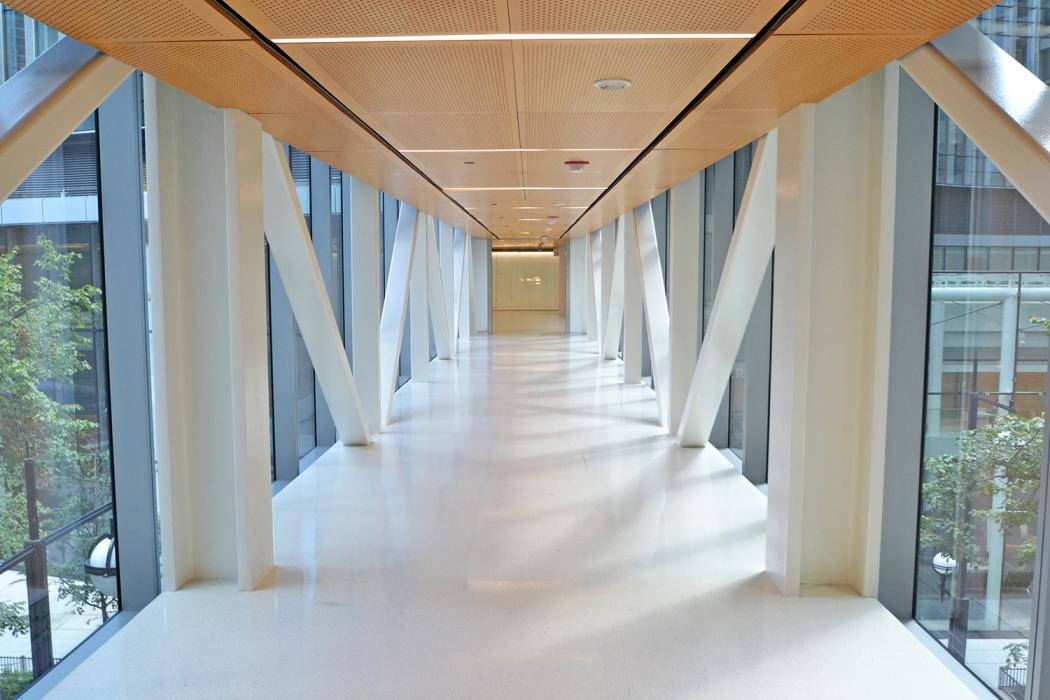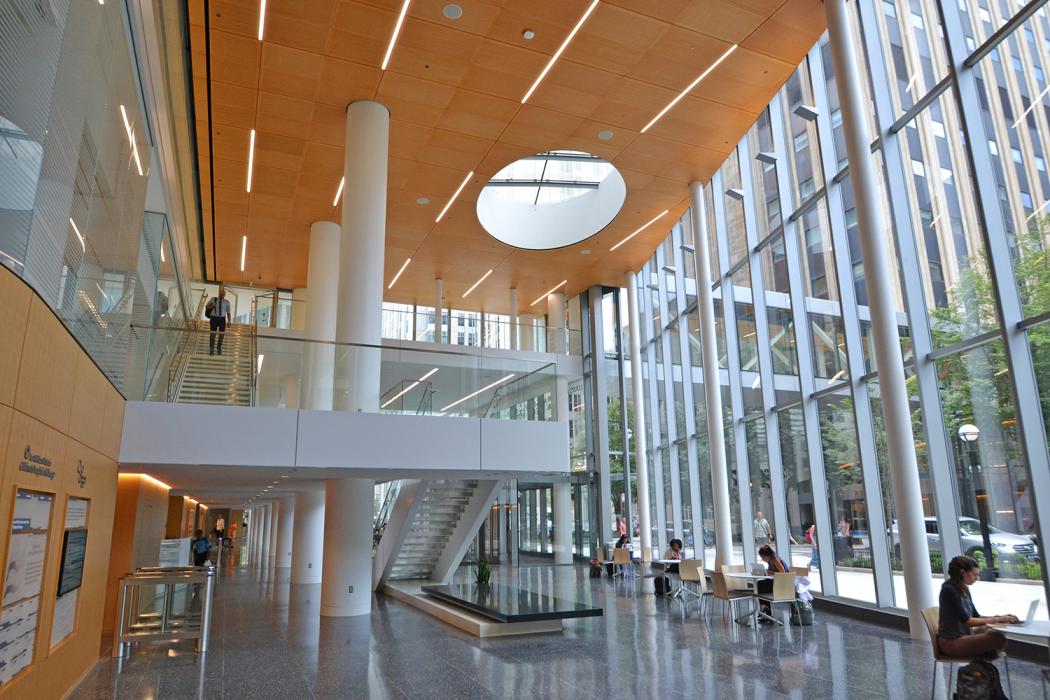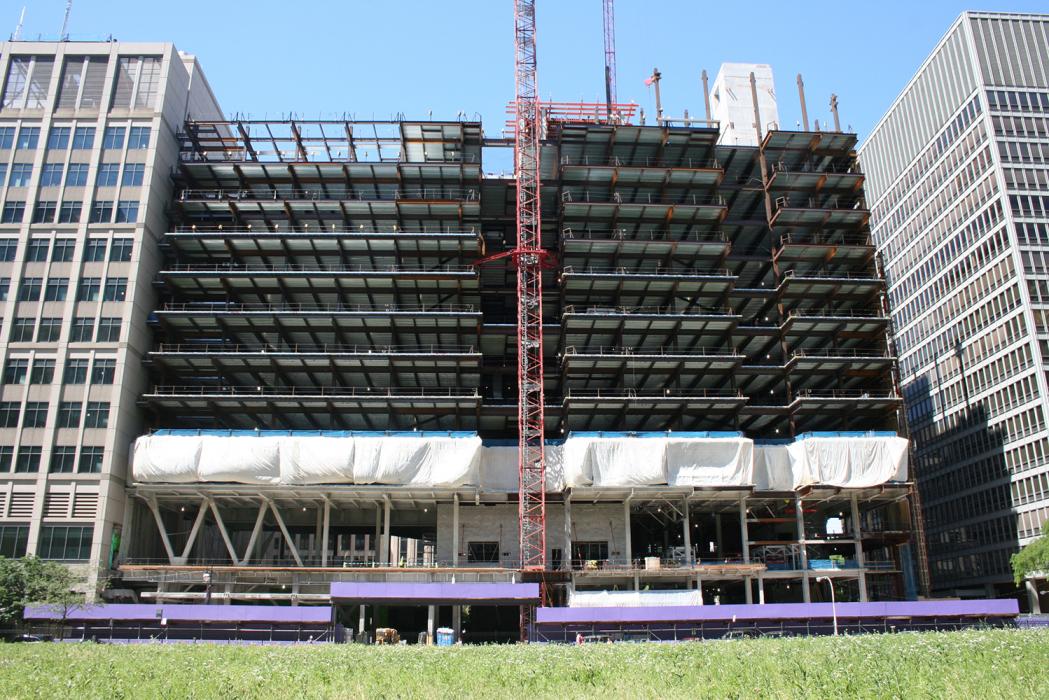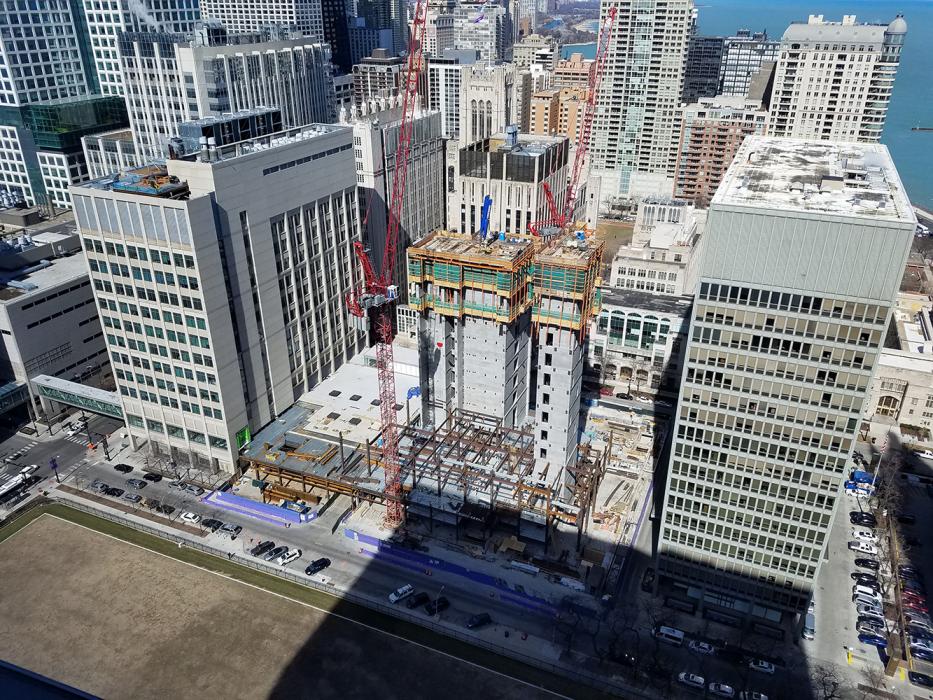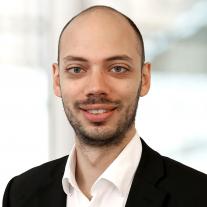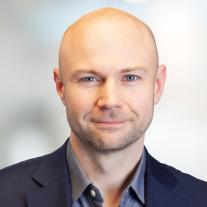Simpson Querrey Biomedical Research Center
The new research center serves as a hub for Northwestern’s downtown Chicago medical academic district and is sculpted to fit in seamlessly within the existing research campus.
Overview
The new Louis A Simpson and Kimberly K. Querrey Biomedical Research Center at Northwestern University's Feinberg School of Medicine (SQBRC) serves as the hub for Northwestern’s downtown Chicago medical academic district and is sculpted to fit in seamlessly within the existing research campus.
The work was planned in two phases: the first phase of construction centered on a 14-story, 320-foot-high building with 600,000 square feet and phrase two built-out to an elevation of 600 feet with an additional 600,000 square feet, making it one of the tallest lab buildings in the world.
We provided structural design and construction engineering services to Perkins&Will for the research center, which was completed in 2019.
From supersized caissons to supersized transfer beams to a delicate new glass roof winter garden to reinforcing the steel frame for the adjacent fully occupied adjacent research building to plan for a 360’ tall future expansion, I cannot think of a more challenging structural design project and the team from Thornton Tomasetti was up to the challenge every time we found a new one!
Highlights
- SQBRC was built with future expansion in mind. Working with our project partners, we designed foundations and the superstructure considering the worst case scenario from both phases and also worked to permit future crane foundations and anticipate crane tie in locations to minimize interruptions of the occupants when the second phase is constructed.
- The first phase of SQBRC consisted of a vertical expansion, above the loading dock of the existing Lurie. However, SQBRC significantly modified the original design intent and, as a result, new column locations did not align with the existing columns or deep foundations and drove the need for a network of transfer trusses and plate girders to accommodate the desired laboratory layouts.
- We collaborated with wind tunnel consultants to minimize the expansion joint size between the existing Lurie building and SQBRC.
- We coordinated framing depths with the architect and mechanical engineer, and verified our analysis with our in-house vibration experts to develop independent models to compare with the results from a vibration consultant to size the floor framing to meet the strict requirements of the lab spaces.
- The architectural vision for the south elevation consisted of a column free bay with a double skin façade to let in natural light and provide a glimpse of the research that is going on inside. We worked with the specialty façade consultant and curtain wall fabricator to coordinate the exterior wall weight, anticipated vertical movement, and slab connection detailing. The impacts on the ceiling heights and structural profile at the slab edge were minimized by detailing the cantilevered framing that supports the double skin facade with coped ends. Costs were kept in check and on budget because of the integration of early on in the process.
- A long span pedestrian bridge extends north from SQBRC to span over Superior Avenue and provide a direct connection to the existing Searle Medical Research Building. To avoid affecting the Searle building’s foundations, the bridge incorporates a 53’ cantilever at its northern tip. Several sets of monumental stairs provide connections between public spaces.
- The northern lobby features three sets of monumental stairs that connect the entry portal to the common spaces on the lower floors. Monumental stairs also link pairs of collaboration spaces on the lab floors. The northern entrance connects the building to Superior Street with a pedestrian plaza, winter garden and lobby galleria.
- The southern façade features a glass “fly by” parapet that extends the curtain wall 35’ above the 12th level mechanical floor slab. The vertical fly by is supported at three levels by structure, cantilevered horizontally from the southernmost columns to support the vertical and lateral loads.


